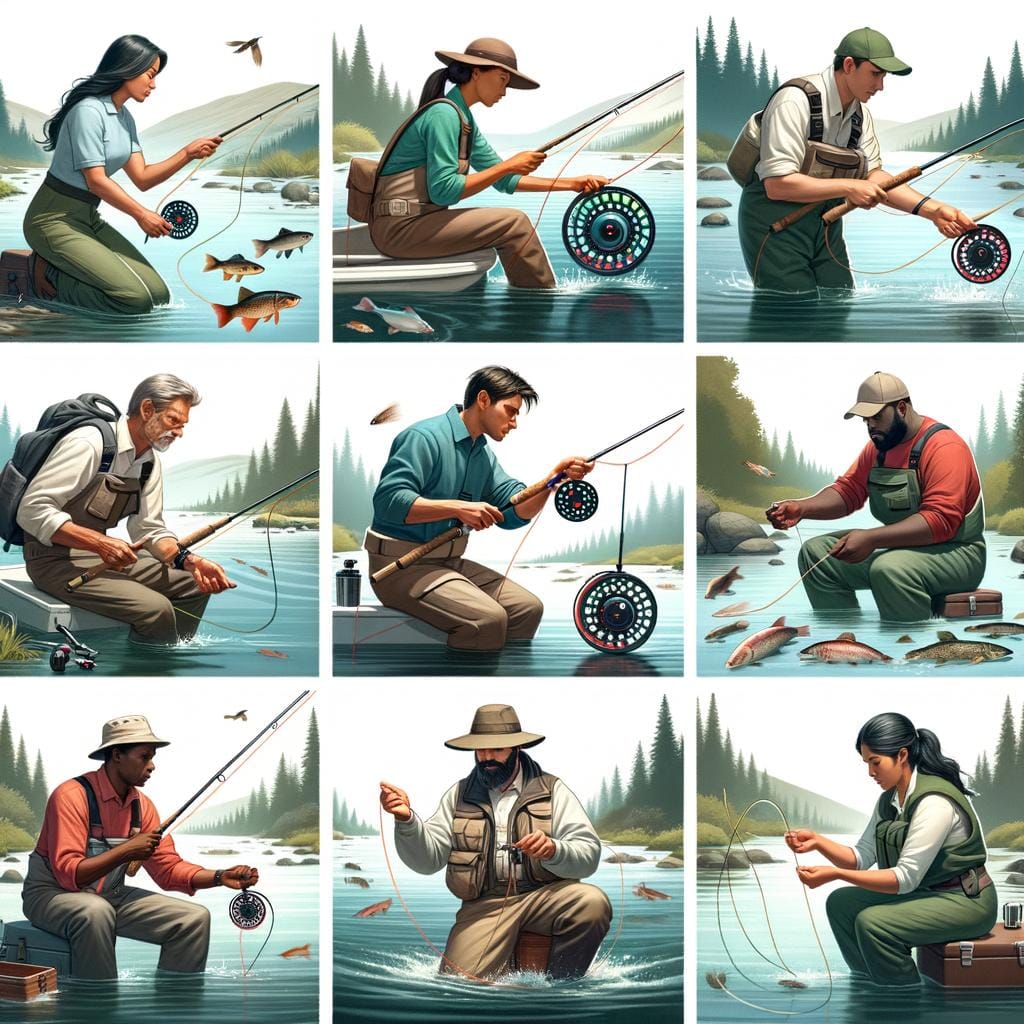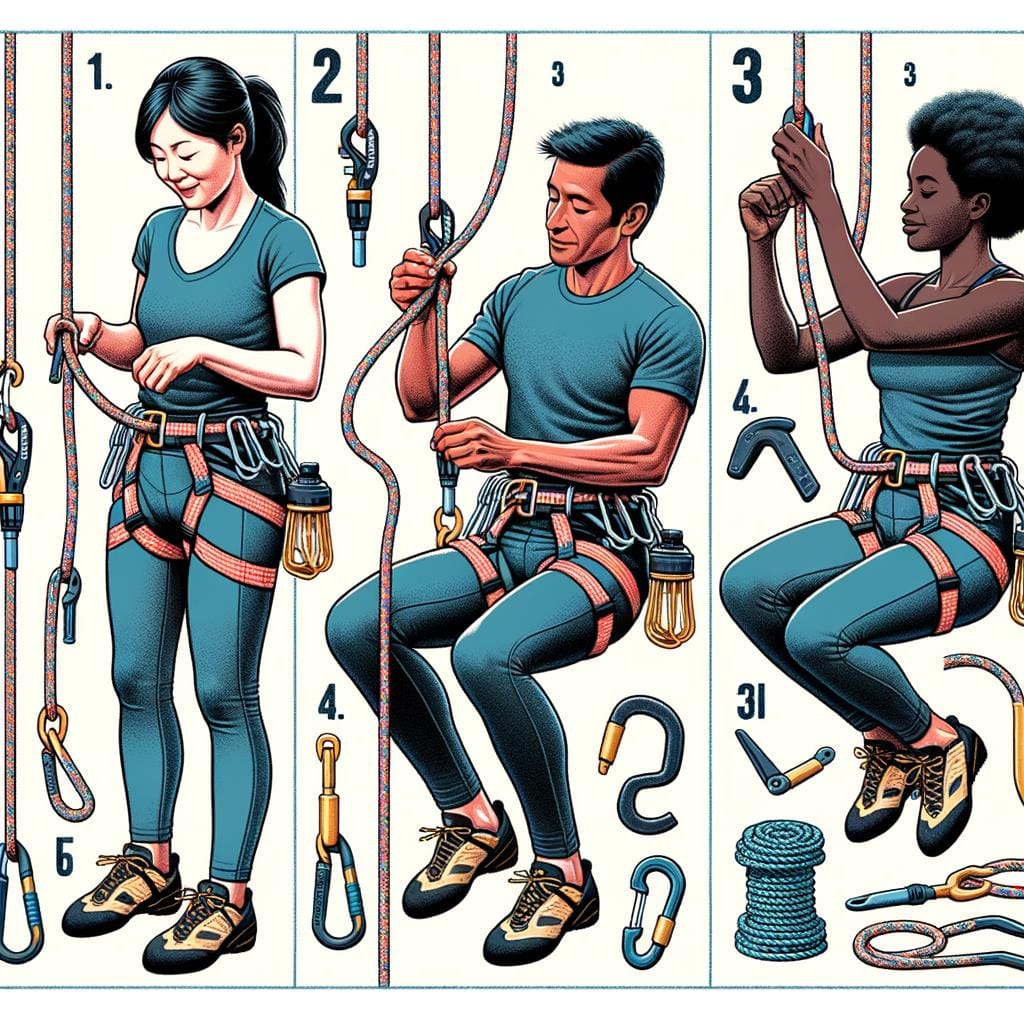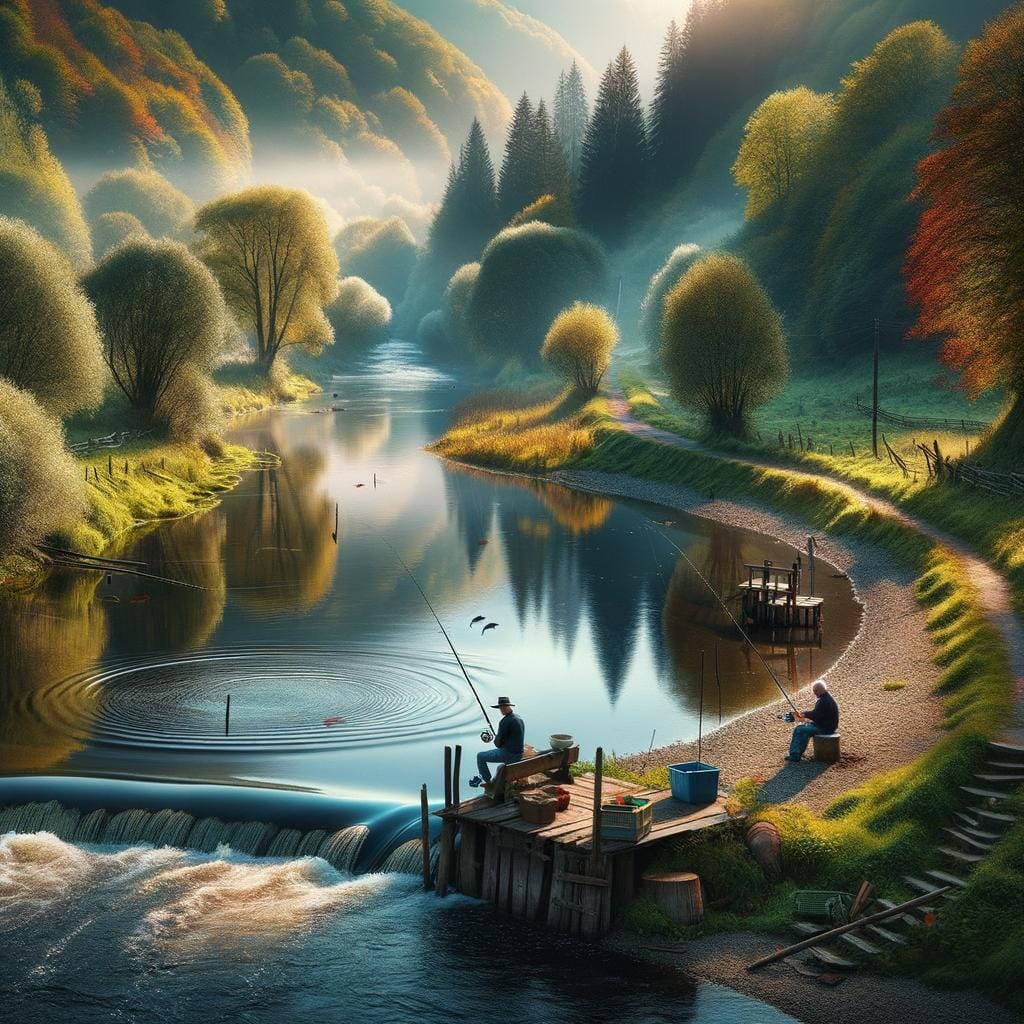Fly fishing techniques are a fundamental aspect of the sport that every angler must understand to be successful on the water. Whether you are a novice or an experienced fly fisherman, mastering the basics is essential for casting with precision and reeling in those elusive fish. In this comprehensive guide, we will delve into the various aspects of fly fishing techniques, from essential gear to advanced strategies for challenging fish species.
One of the key components of fly fishing techniques is mastering the art of casting. From basic overhead casts to more intricate roll casts, developing your casting skills is crucial for presenting your fly accurately to the fish. Understanding different casting techniques and when to use them can make a significant difference in your success on the water.
In addition to casting, reading the water plays a vital role in fly fishing success. Identifying ideal spots where fish are likely to gather, such as riffles, pools, and eddies, can increase your chances of hooking a trout or other prized catch. By learning how to interpret water conditions and structure, you can strategically position yourself for a successful day of fishing.
Essential Fly Fishing Gear
Fly fishing is a sport that requires specific gear to be successful on the water. Understanding the essential fly fishing gear is crucial for any angler looking to delve into this exciting hobby. From rods and reels to lines and flies, each piece of equipment plays a vital role in the overall experience of fly fishing.
Choosing the Right Rod
One of the most important pieces of gear for fly fishing is the rod. When selecting a fly rod, it’s essential to consider factors such as length, weight, and action.
The weight of the rod should match the type of fish you are targeting, with lighter weight rods ideal for smaller fish like trout and heavier weight rods suited for larger species like salmon or steelhead. Additionally, the rod’s action will affect how it flexes, influencing your casting accuracy and distance.
Picking the Perfect Reel
A quality reel is essential for any fly angler, as it plays a critical role in managing your line while fighting a fish. When choosing a reel, consider its size and capacity to accommodate the type of line you will be using.
Also, look for features like drag systems that can handle different levels of fish resistance. Whether you prefer click-and-pawl or disc-drag reels, make sure your chosen reel complements your rod for optimal performance on the water.
Selecting the Suitable Line and Flies
The right fly line is key to successful fly fishing techniques as it determines how your cast will perform on various water conditions. Different types of lines such as floating, sinking, or intermediate are designed for specific fishing scenarios – adapt accordingly based on where you plan to cast your line.
Additionally, selecting appropriate flies based on insect hatches or patterns can significantly impact your success when targeting fish species. Matching flies to natural bug appearances can increase your chances of enticing bites from wary fish populations.
Overall, having reliable rods, reels, lines, and flies is fundamental in mastering fly fishing techniques effectively. Remember that investing in quality gear tailored to your target species and preferred angling style will enhance your experience on the water and ultimately contribute to more successful outings while enjoying this rewarding sport.
Understanding the Different Types of Flies
When it comes to fly fishing, one of the most crucial aspects to understand is the different types of flies used for this angling method. Each type of fly serves a specific purpose and mimics different stage of insects or baitfish that fish feed on. The four main categories of flies are dry flies, wet flies, nymphs, and streamers.
Dry flies are designed to imitate insects that float on the surface of the water. These flies are typically made with buoyant materials such as feathers or foam, allowing them to stay afloat so they can be easily seen by fish cruising near the water’s surface. Dry fly fishing is considered by many anglers to be the most exciting form of fly fishing because it involves casting to rising fish and watching them strike the fly.
In contrast, wet flies are meant to be fished beneath the surface of the water. These flies mimic aquatic insects that have either hatched underwater or have been submerged due to natural causes. Wet fly fishing is effective when fish are feeding below the surface or during periods when there is minimal insect activity on top of the water.
By mastering the art of presenting wet flies at varying depths, anglers can increase their chances of enticing fish to strike. Nymphs and streamers each serve unique roles in attracting fish as well, with nymphs imitating immature forms of insects underwater and streamers mimicking baitfish swimming through the water column. Understanding how to use each type of fly effectively can greatly enhance your success on the water when employing different fly fishing techniques.
Casting Techniques
When it comes to fly fishing techniques, mastering the art of casting is essential for success on the water. The perfect cast involves a combination of proper technique, timing, and finesse. One of the key elements of a successful cast is understanding the mechanics of how the rod, reel, line, and fly work together in harmony. Practice makes perfect when it comes to casting, so spending time on the water honing your skills is crucial.
There are several different casting techniques that fly fishermen can use depending on the situation. The most common cast is known as the basic overhead cast, where the angler brings the rod back over their shoulder and then forward to deliver the fly to its target.
Another important technique is roll casting, which is useful for situations where there isn’t enough room behind you for a traditional backcast. By mastering these different casting techniques, anglers can be prepared for any fishing scenario they encounter.
In addition to mastering different casting techniques, anglers should also focus on accuracy and presentation when casting their fly. The goal is to present the fly in a natural and enticing way to entice fish to strike. By practicing regularly and experimenting with different approaches, anglers can improve their casting skills and increase their chances of success on the water.
| Fly Fishing Technique | Importance |
|---|---|
| Casting Accuracy | Crucial for presenting flies effectively |
| Roll Casting | Useful in tight spaces or with obstacles behind |
| Practice | Key to mastering different casting techniques |
Reading the Water
When it comes to fly fishing, one of the key factors that can greatly impact your success is knowing how to read the water. Different types of fish prefer certain types of water conditions, and being able to identify these ideal spots can make a big difference in your catch rate.
One important aspect to consider is the current flow – trout, for example, often prefer slower-moving sections of a stream where they can conserve energy while still having access to food.
Another crucial element to take note of is underwater structure. Fish tend to gather around areas with structures such as rocks, logs, or vegetation as these provide protection and act as hiding spots from predators. By observing the surface of the water and looking for any disturbances or patterns, you can start to get an idea of where fish might be holding.
In addition to current flow and underwater structure, paying attention to the presence of insect activity can also guide you in identifying potential hotspots for fly fishing. Areas with a concentration of insects on or near the surface of the water are likely areas where fish will be feeding.
Matching your flies to the insects present can significantly increase your chances of getting a bite. By combining these observations with your knowledge of fly fishing techniques, you can strategically position yourself in prime locations for a successful day on the water.
| Key Factors | Impact |
|---|---|
| Current Flow | Different types of fish have preferences. |
| Underwater Structure | Fish gather around structures like rocks and logs. |
| Insect Activity | Areas with concentrated insects indicate feeding spots. |
Tips for Catching Trout
Trout fishing is a beloved pastime for many anglers, offering both a challenging and fulfilling experience on the water. To improve your success in targeting this popular fish species, it’s important to understand specific strategies and techniques that can help you reel in that prized catch. Here are some tips for catching trout using effective fly fishing techniques:
- Choose the Right Flies: Different types of flies are more effective depending on the conditions and time of year. Dry flies work well when trout are rising to feed on insects at the surface, while nymphs are ideal for fishing underwater where trout are actively feeding. Experiment with various flies to see what works best in different situations.
- Study Trout Behavior: Understanding the behavior patterns of trout can give you an advantage when trying to catch them. Trout tend to hold in certain areas of the water, such as under rocks or along the edges of currents. By observing their movements and habits, you can position yourself in the right spot to increase your chances of a successful catch.
- Perfect Your Presentation: The way you present your fly on the water can make a significant difference in enticing trout to strike. Practice different casting techniques, such as drifts and mends, to create a natural presentation that mimics the movement of real insects. Pay attention to drag on your line, as any unnatural movement can deter trout from biting.
Remember
- Patience is key when fishing for trout. They can be selective feeders and may take some time before deciding to strike.
- Stay attuned to changes in weather conditions and water temperature, as these factors can affect trout activity levels.
- Respect nature and practice catch-and-release methods whenever possible to preserve trout populations for future generations.
By incorporating these tips into your fly fishing approach, you’ll be better equipped to catch trout consistently and enjoy a rewarding experience on the water. Whether you’re a beginner or seasoned angler, honing your skills and adapting your techniques will help you become a more successful trout fisherman in no time.
Knot Tying Skills
When it comes to fly fishing, having the right skills and techniques is crucial for success out on the water. One of the most important aspects of fly fishing is knot tying. Properly tying knots ensures that your flies stay securely attached to your line and that you can effectively cast and reel in your catch. Here are some essential knots every fly fisherman should know:
- Improved Clinch Knot: This knot is commonly used to tie a fly to the leader or tippet. It is strong and reliable, making it perfect for securing your flies during casting and battling with fish.
- Loop-to-Loop Connection: This knot is essential for attaching the leader to the fly line. Creating a loop at the end of your leader allows for easy attachment to the loop at the end of your fly line, providing a seamless connection that ensures free movement of your flies.
- Double Surgeon’s Knot: This knot is great for connecting two pieces of tippet or leader together. It is easy to tie and creates a strong bond between the two lines, allowing for smooth casting and preventing breakages during fights with fish.
Mastering these essential knots will not only improve your overall fly fishing experience but also increase your chances of landing that prized catch. Practice tying these knots regularly before heading out on your next fishing trip, so you can focus on enjoying the thrill of the catch rather than worrying about losing a fish due to poorly tied knots.
Remember, proper knot tying skills are key in ensuring a successful day on the water while practicing fly fishing techniques. So take the time to learn and perfect these essential knots, as they can make all the difference in your angling adventures. Happy fishing.
Fly Fishing Etiquette
Respecting Nature
When it comes to fly fishing etiquette, one of the most important aspects is respecting nature and the environment you are fishing in. It is crucial to leave no trace behind, which means picking up after yourself, properly disposing of any trash, and being mindful of your impact on the surroundings.
This also includes not disturbing wildlife or their habitats while you are out on the water. By being conscious of your actions and surroundings, you can help preserve the beauty of nature for future generations of fly fishermen to enjoy.
Consideration for Other Anglers
Another important aspect of fly fishing etiquette is showing consideration for other anglers who may be sharing the same waters as you. This includes giving fellow fishermen plenty of space to cast their lines and not crowding or encroaching on someone else’s fishing spot.
It’s also important to be aware of your own casting distance and make sure you are not putting others at risk with your movements. By being respectful and courteous towards other anglers, everyone can have an enjoyable and successful day on the water.
Respecting Wildlife
In addition to respecting nature and other anglers, it is essential to show respect for the wildlife that inhabits the waters you are fishing in. Avoiding unnecessary noise, sudden movements, or disturbances can help prevent scaring away fish and other creatures that call these environments home.
It’s important to observe wildlife from a distance and appreciate their presence without causing undue stress or harm. By practicing good etiquette when it comes to interacting with wildlife, you can contribute to maintaining a healthy balance between humans and nature in the world of fly fishing techniques.
Advanced Fly Fishing Techniques
Fly fishing is not just a hobby or a sport, but rather an art form that requires precision, patience, and skill. As you progress in your fly fishing journey, you may find yourself wanting to challenge yourself by targeting more elusive and challenging fish species. To successfully level up your skills for these tougher catches, here are some advanced fly fishing techniques to consider:
- Switch Casting: This casting technique allows you to change directions quickly and efficiently without moving your entire body. It is especially useful in situations where there are obstacles hindering a traditional cast. By mastering switch casting, you can effectively reach those hard-to-reach spots where the big fish might be lurking.
- Long Distance Casting: Targeting more challenging fish species may require casting long distances with accuracy. Practice your long distance casting techniques to ensure that your fly lands right where it needs to be, even in windy conditions or fast-moving water.
- Mastering Different Retrieves: Experiment with various retrieve techniques such as stripping, pulsing, twitching, and skating to entice different species of fish. Understanding how each retrieval method affects the presentation of your fly can make all the difference when targeting elusive game fish.
To increase your chances of success when pursuing more challenging fish species, it is essential to continuously hone your skills and adapt to different environments and conditions. Don’t be afraid to seek guidance from experienced anglers or take lessons to improve your fly fishing techniques further. Remember that practice makes perfect in the world of fly fishing, so keep refining your skills and exploring new challenges in pursuit of those prized catches.
Troubleshooting Common Fly Fishing Problems
Dealing With Wind
One of the most common challenges that fly fishermen face is dealing with windy conditions. Strong gusts can make casting accurately and effectively a difficult task.
To combat this, consider adjusting your casting technique by using shorter casts, lowering your rod tip to reduce wind resistance, and using heavier flies or lines that are less affected by the wind. Additionally, try to position yourself so that the wind is at your back rather than in your face, which can help improve your casting distance and accuracy.
Tackling Tangles
Tangles in the line are another frustrating issue that can disrupt your fishing experience. To prevent tangles from occurring, make sure to properly maintain and clean your equipment regularly. Avoid false casting excessively as this can lead to line twists and tangles. If you do encounter a tangle while fishing, remain calm and carefully work through it without pulling forcefully on the line, which can worsen the situation.
Overcoming Other Obstacles
In addition to wind and tangles, fly fishermen may also encounter other obstacles such as vegetation, rocks, or snags in the water. When faced with these challenges, patience is key. Take your time to navigate around obstructions or adjust your casting angle to avoid getting caught up in them.
Be mindful of your surroundings and always prioritize safety when navigating through potentially hazardous areas. By remaining calm and adaptable in the face of obstacles, you’ll be better equipped to handle unexpected situations while out on the water practicing your fly fishing techniques.
Conclusion
In conclusion, mastering the art of fly fishing techniques requires a combination of knowledge, skill, and practice. By understanding the basics of essential gear, different types of flies, casting techniques, reading the water, and knot tying skills, anglers can increase their chances of success on the water. Additionally, learning proper fly fishing etiquette is crucial in maintaining respect for nature, other anglers, and wildlife while enjoying this beloved pastime.
As anglers progress in their fly fishing journey, they can explore advanced techniques to challenge themselves further with more difficult fish species. By honing their skills and troubleshooting common problems like wind and tangles, fly fishermen can improve their overall fishing experience. While there may be setbacks along the way, perseverance and dedication will ultimately lead to greater success on the water.
Ultimately, the world of fly fishing offers endless opportunities for practice and exploration. Whether it’s targeting trout in a serene river or chasing after elusive saltwater species in the ocean, there is always something new to discover and learn. So grab your gear, head to your favorite fishing spot, and continue to dive into the world of fly fishing techniques with passion and determination. Happy casting.
Frequently Asked Questions
What Is the Trick to Fly Fishing?
The trick to fly fishing lies in mastering the art of casting. This involves delicate wrist movements and precise timing to mimic the natural movement of insects on the water. Patience, practice, and observation are key to becoming a successful fly fisherman.
What Are the Different Fly Fishing Techniques?
There are various fly fishing techniques used depending on the conditions and target species. Some common techniques include dry fly fishing, nymphing, streamer fishing, and Euro nymphing. Each technique requires different skills and equipment, but all focus on presenting a lifelike imitation of an insect or baitfish to fool the fish.
What Is the Easiest Way to Fly Fish for Trout?
The easiest way to fly fish for trout is to start with a basic setup. A lightweight rod and reel paired with a floating line are ideal for beginners. Focus on learning how to cast accurately and present your fly gently on the water’s surface.
Start with simple dry flies like Adams or Elk Hair Caddis that imitate commonly seen insects. Practice in calm waters before progressing to more challenging environments like fast-flowing rivers or windy lakes.

An avid outdoor enthusiast, writer, and environmental advocate who has spent over two decades exploring the world’s most breathtaking landscapes. With a background in environmental science and a passion for adventure, Frances combines her love for nature with her talent for storytelling to inspire others to embark on their own outdoor journeys.





